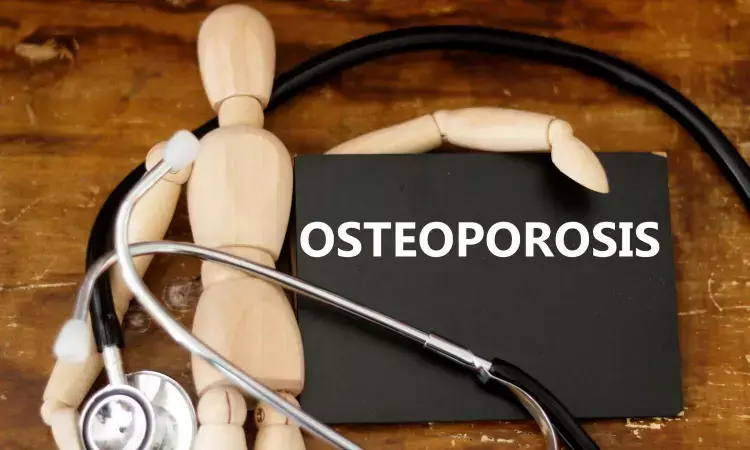- Home
- Medical news & Guidelines
- Anesthesiology
- Cardiology and CTVS
- Critical Care
- Dentistry
- Dermatology
- Diabetes and Endocrinology
- ENT
- Gastroenterology
- Medicine
- Nephrology
- Neurology
- Obstretics-Gynaecology
- Oncology
- Ophthalmology
- Orthopaedics
- Pediatrics-Neonatology
- Psychiatry
- Pulmonology
- Radiology
- Surgery
- Urology
- Laboratory Medicine
- Diet
- Nursing
- Paramedical
- Physiotherapy
- Health news
- Fact Check
- Bone Health Fact Check
- Brain Health Fact Check
- Cancer Related Fact Check
- Child Care Fact Check
- Dental and oral health fact check
- Diabetes and metabolic health fact check
- Diet and Nutrition Fact Check
- Eye and ENT Care Fact Check
- Fitness fact check
- Gut health fact check
- Heart health fact check
- Kidney health fact check
- Medical education fact check
- Men's health fact check
- Respiratory fact check
- Skin and hair care fact check
- Vaccine and Immunization fact check
- Women's health fact check
- AYUSH
- State News
- Andaman and Nicobar Islands
- Andhra Pradesh
- Arunachal Pradesh
- Assam
- Bihar
- Chandigarh
- Chattisgarh
- Dadra and Nagar Haveli
- Daman and Diu
- Delhi
- Goa
- Gujarat
- Haryana
- Himachal Pradesh
- Jammu & Kashmir
- Jharkhand
- Karnataka
- Kerala
- Ladakh
- Lakshadweep
- Madhya Pradesh
- Maharashtra
- Manipur
- Meghalaya
- Mizoram
- Nagaland
- Odisha
- Puducherry
- Punjab
- Rajasthan
- Sikkim
- Tamil Nadu
- Telangana
- Tripura
- Uttar Pradesh
- Uttrakhand
- West Bengal
- Medical Education
- Industry
Bisphosphonates initial treatment for primary osteoporosis for fracture prevention recommends ACP guideline

The American College of Physicians (ACP) has recommended bisphosphonates as initial pharmacologic treatment to reduce the risk of fractures in males and postmenopausal females diagnosed with primary osteoporosis.
ACP has issued an update of its guideline with clinical recommendations for treatments of primary osteoporosis and low bone mass in adults.
Pharmacologic Treatment of Primary Osteoporosis or Low Bone Mass to Prevent Fractures in Adults: A Living Clinical Guideline from the American College of Physicians is published today in Annals of Internal Medicine.
Osteoporosis is a systemic skeletal disease characterized by decreasing bone mass and deterioration of bone tissue that leads to an increased risk for bone fragility and fracture, especially in the hip, spine, and wrist. Overall, an estimated 10.2 million people aged 50 and older in the United States have osteoporosis and about 43.3 million people (> 40% of older US adults) have low bone mass associated with a high risk of progression to osteoporosis.
The guideline examines new evidence that has emerged on the efficacy of human parathyroid hormone-related peptides, sclerostin inhibitors, the comparative effectiveness of treatments, and treatments in males. In postmenopausal females and males with primary osteoporosis, bisphosphonates had the most favorable balance between benefits, harms, patient values and preferences, and cost among the drug classes that were evaluated. In addition to net clinical benefits, bisphosphonates are much cheaper than other pharmacologic treatments and are available in generic oral and injectable formulations.
“Bone fractures resulting from osteoporosis are associated with serious morbidity and mortality, and people with a history of osteoporotic bone fractures are at much higher risk of future fractures,” said Ryan D. Mire, MD, MACP, president, ACP. “This guideline will help clinicians determine the best course of treatment for their patients to best avoid bone fractures.”
The ACP guideline highlights the importance of adherence by adults with osteoporosis to adhere to recommended pharmacologic treatments and healthy lifestyle modifications, including exercise, and counseling for evaluation and prevention of falls. Adequate calcium and vitamin D should be part of fracture prevention. ACP suggests that clinicians should take an individualized approach regarding whether to start pharmacologic treatment with a bisphosphonate in females over the age of 65 with low bone mass (osteopenia) to reduce the risk of fracture(s). However, evidence was very uncertain to make a recommendation for or against treatment in males with low bone mass.
Current evidence suggests that increasing the duration of bisphosphonate therapy longer than 3-5 years reduced the risk of new vertebral fractures but not the risk of other fractures. However, there is an increased risk of long-term harms. Therefore, clinicians should consider stopping bisphosphonates after five years of treatment unless there is a strong indication to continue treatment.
The guideline also suggests that clinicians use the RANK ligand inhibitor (denosumab) as a second-line pharmacologic treatment to reduce the risk of fractures in postmenopausal females and males diagnosed with primary osteoporosis who have contraindications to or experience adverse effects of bisphosphonates.
ACP suggests that clinicians use the sclerostin inhibitor (romosozumab) or recombinant PTH (teriparatide), followed by a bisphosphonate, to reduce the risk of fractures only in females with primary osteoporosis with very high risk of fracture.
This guideline is based on a systemic review and network meta-analysis conducted by the ACP Center for Evidence Reviews at the Portland Veteran Affairs Research Foundation. ACP’s Clinical Guidelines Committee is planning to maintain this topic as a living guideline with literature surveillance and periodic updating of the systematic review and the clinical recommendations.
Reference:
Amir Qaseem, Lauri A. Hicks, Itziar Etxeandia-Ikobaltzeta, Tatyana Shamliyan, and Thomas G. Cooney, MD, for the Clinical Guidelines Committee of the American College of Physicians https://doi.org/10.7326/M22-1034
Dr Kamal Kant Kohli-MBBS, DTCD- a chest specialist with more than 30 years of practice and a flair for writing clinical articles, Dr Kamal Kant Kohli joined Medical Dialogues as a Chief Editor of Medical News. Besides writing articles, as an editor, he proofreads and verifies all the medical content published on Medical Dialogues including those coming from journals, studies,medical conferences,guidelines etc. Email: drkohli@medicaldialogues.in. Contact no. 011-43720751


